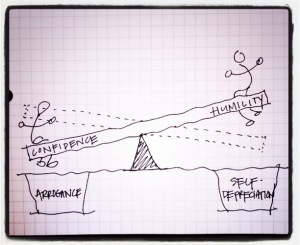Eden held a senior director job title, received glowing reviews, and her educational credentials and reputation were impeccable. Yet she felt like a failure. She lived in constant fear that her lack of ability would be discovered. That she would be exposed as the incompetent fraud she believed herself to be. Eden was surprised there was a name for what she felt – the impostor syndrome, a term was coined by clinical psychologists Pauline Clance and Suzanne Imes in 1978.
While not an officially recognized condition, imposter syndrome is defined as “a psychological phenomenon in which people are unable to internalize their accomplishments. Regardless of what level of success they may have achieved in their chosen field of work or study or what external proof they may have of their competence, those with the syndrome remain convinced internally they do not deserve the success they have achieved and are actually frauds. Proof of success is dismissed as luck, timing, or as a result of deceiving others into thinking they were more intelligent and competent than they believe themselves to be.”
Eden, an amazing woman, lacked self-efficacy. She didn’t believe she had the ability to pull together her social, physical, thinking and behavioral skills to accomplish her goals. The presence, or lack, of self-efficacy determines how you feel, think and motivate yourself as well as how you behave.
Confidence is courage with ease. ~Daniel Maher
Without confidence in our own abilities, it’s very hard to have courage. Having confidence in what you accomplish can remove the sense of failure and the irrational fear of being found out that so plagued Eden.
Albert Bandura, a Canadian psychologist and author of Self-Efficacy: The Exercise of Control, regards the self-efficacy as:
the foundation of human motivation, well-being and personal accomplishments. Unless people believe that they can bring about desired outcomes by their actions they have little incentive to act or to persevere in the face of difficulties. A wealth of empirical evidence documents that beliefs of personal efficacy touch virtually every aspect of people’s lives – whether they think productively, self-debilitatingly, pessimistically or optimistically; how well they motivate themselves and persevere in the face of adversities; their vulnerability to stress and depression, and the life choices they make.
Bandura identifies four sources for building self-efficacy:
1) Mastery experiences, best described as your successes. Success is the most robust source of self-efficacy. As Oscar Wilde says, “Nothing succeeds like success.”
How do you get more successful experiences?
• Evaluate your performance just as you would another’s – looking specifically for accomplishments. Don’t be modest – apply an objective eye toward successful outcomes, e.g. when you improved an operating process, when someone you mentored was promoted, when your management resulted in significant bottom line improvements, when your involvement improved a community function, when you helped someone see through the darkness and regain their footing. These are all successes.
• Write down your past successes as well as the knowledge, skill and/or abilities involved. Know, and accept, that you do have the requisite competencies to make things happen.
• Establish specific, short-term goals that challenge you, yet are still attainable, and work diligently to achieve them. Move past thinking into action and results. Give yourself credit for making the results happen.
2. Modeling experience, defined as observing other people who are similar to you succeeding at a task. Seeing their success can strengthen your belief in your abilities to affect a similar successful outcome.
How do you get more modeling experience?
• Surround yourself with people committed to making their goals a reality.
• Select well-known people whom you respect and whose interests, career goals, etc. track with yours, and watch what they do to make success happen for them.
• Avoid the “Debbie Downers” and being sucked into their downward spiral of belief that comes from talking only about failures or what’s wrong.
The final two elements of Bandura model – persuasion and emotional state – coming up in part two!
What say you about lacking belief in your achievements? How have you helped others believe in their abilities?
